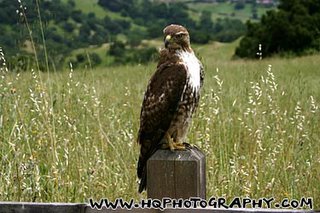I recently visited with two extraordinary women. I’m impressed with their expertise in animal behavior, breeding practices and agricultural knowledge. Michelle runs a horse boarding facility and Darlene runs a small cattle and horse ranch. Each exhibits a confidence and responsibility that indicates a life long interest in their work. It takes only a moment’s conversation to realize both women love what they are doing and have been animal lovers all their lives.
Darlene and her husband live in a small rural community called Escalon. After leaving the central California coastal area and the beautiful rolling hills and mountains of Pacheco Pass in Santa Clara Valley, it’s a several hour drive thru the fertile San Joaquin Valley to Modesto, California.
Darlene was waiting for us at the Flying J truck stop in Modesto where we had a fabulous lunch. It had been a long time since I had seen Darlene. She and my daughter share an interest in horses and had sent me photos of themselves on trail rides. Our lunch conversation centered on horses, rodeos, dairy farming, haying, and stock auctions.
After a leisurely lunch we drove to the ‘farm’. Of course the first thing we did was visit the cattle and horses. Several years ago Darlene had purchased a 2 year old Black Angus bull at auction and he has grown into a huge animal! The size of his head is massive and a quite intimidating although Darlene says he isn’t aggressive. Even so, she says she keeps an eye on him when she is in a pen with the cows and he’s near by.
The cows are also Black Angus. Darlene showed us how gentle the cows are by petting those she had given names. The bull was also in the same pen and he barely paid her any attention, but when she opened the gate to leave the pen, the bull did take a step toward her and she just held out her hand to stop him. A very impressive display of control !!!
Darlene’s favorite horse is Nugget which she rides as often as possible. A 2 year old filly, that is the spitting image of Nugget, but sired by another, will start her training in the spring. We petted 20 year old Perry, a thirty thousand dollar dressage horse that has been retired and no longer ridden. He is over 16 hands and as gentle as a pussy cat!
The ranch is surrounded by large dairy farms. Sizes range from 200 Holstein cows to as many as 600. Darlene raises hay which means planting and cutting, but she gave us a long detailed description of ‘green chop’ which is what the dairies feed. Field corn is cut while still green. The entire plant is finely chopped then piled into huge mounds where tractors compact it. When all the oxygen and water has been squeezed out, forming a dry ‘cake’, it is stored under tarps or blown into giant tubes for later use. Covered mounds like giant Quonset huts and long, tubes, placed side by side, dot the fields, indicating dairy country.
Michelle’s horse facility is a hidden treasure. Just as one thinks they are lost at the end of a paved lane, shrubs reveal a curve in the road leading to a private horse boarding and training facility. A spacious parking area of sparkling white gravel is next to a large covered arena.
The pastures lie in a bowl surrounded by foothills and mountains. One’s first impression is one of extreme cleanliness with well placed barns, stalls and pens. Michelle owns 30 acres and boards a horse for each acre.
She is the single care taker and does all the work although her husband and children lend support and help at various times. While feeding apples and carrots to my daughter’s horse, Bailey, we had a chance to ‘shoot the breeze’ with Michelle and heard stories about Bailey’s funny conduct on the days she’s not visited.
She told us of her plans to plant several hundred trees along a fence line and pointed out which horses she plans to bring into the barns for the winter to fatten them up, but still turn them out daily for exercise.
We talked about which horse is the boss in the pasture, (which happens to be Bailey), and whether or not if a horse’ rear end is higher than its withers it indicates the horse is still growing. That was a bit of info I had never heard before! Now, every time I see a horse, I’ll probably start silently comparing derrieres to necks….just one more thing to pay attention to so I can pretend to know more than I do about horses.
Hats off to both Darlene and Michelle! They are resourceful and charming women and I’m lucky to know them.
 While searching the internet for hawk photos I came across this photo which is like the hawks we see.
While searching the internet for hawk photos I came across this photo which is like the hawks we see.
